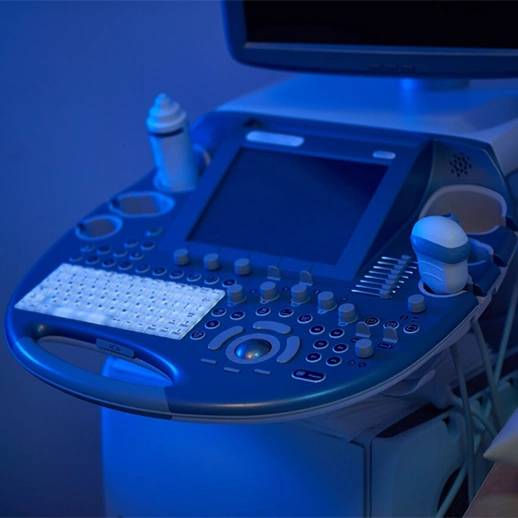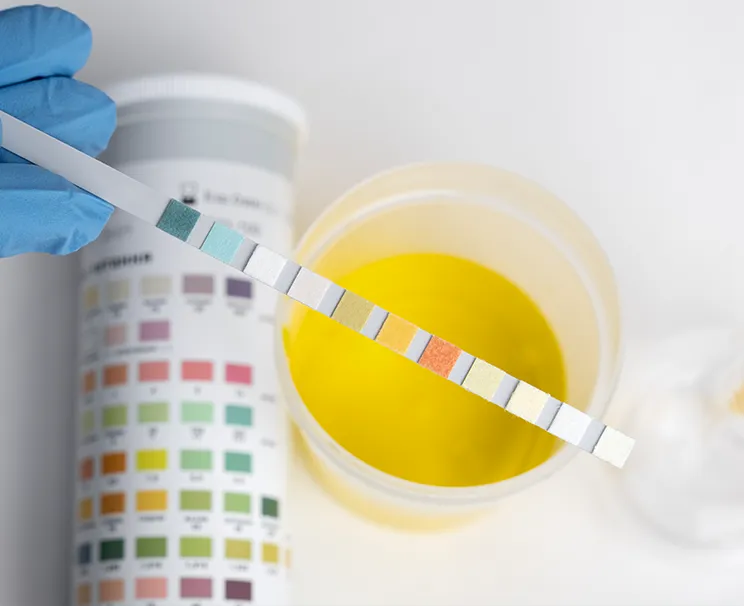Color ultrasound is a specialized imaging technique used to analyze blood flow and direction within the vessels. With this method, potential blockages, narrowings, or flow disorders in the circulation can be easily detected.
Color ultrasound is especially preferred in pregnancy monitoring, evaluating cardiovascular diseases, and examining the structure of vessels that reach the organs. As it is a painless procedure and does not contain radiation, it provides safe and quick results. In this respect, it has become an indispensable part of the diagnostic process in many medical fields.
The key advantages of this method are as follows:
- Vascular mapping: The structures of vessels leading to organs can be examined in detail.
- Flow measurement: The direction and speed of blood flow can be clearly analyzed.
- Early diagnosis: Possible circulatory disorders can be quickly identified.
- Pregnancy safety: Since it does not involve radiation, it can be safely applied during pregnancy.
What is Color Ultrasound?
Color ultrasound is an advanced diagnostic method used to visualize blood flow in the vascular structures of the body. This procedure allows physicians to analyze the direction and speed of blood cells inside the vessels. Thanks to Color Doppler technology, not only the organ structures but also the vessels supplying these organs can be evaluated in detail. This enables the early detection of many vascular diseases.
During the imaging process, the device emits high-frequency sound waves. These waves reflect back after hitting body tissues, and the device converts these echoes into images. The direction and speed of blood flow are calculated based on changes in these sound waves. No pain is felt during the procedure, and it is typically completed within a few minutes.
So, how is the ultrasound performed?
- First, the patient is positioned appropriately based on the area to be examined.
- Then, gel is applied to the skin to ensure contact with the probe.
- The probe is directed toward the targeted vessels to capture images.
- Throughout the entire process, the patient remains in a comfortable position while the physician evaluates the images on screen.

Color ultrasound is used in various fields, from pregnancy to heart diseases. It is particularly effective in diagnosing conditions like vascular blockages, clot formations, or circulatory disorders. In this regard, it offers more comprehensive data compared to conventional ultrasound.
Color ultrasound is also frequently used during pregnancy. Evaluating fetal blood circulation is critically important, especially when monitoring placental and umbilical cord blood flow. This allows early detection of growth retardation, nutritional issues, or congenital heart anomalies. Experts use this imaging method periodically in high-risk pregnancies to closely monitor maternal and fetal health.
What Are the Prices of Color Ultrasound?

Color ultrasound is a diagnostic imaging method that enables a detailed analysis of the vascular system and blood flow. However, the pricing may vary depending on several factors. The equipment level of the healthcare institution, the experience of specialist physicians, and the quality of the technology used all influence the cost. Especially ultrasounds targeting leg circulation may require more detailed scanning, which can affect the pricing.
Main factors affecting the price:
- Whether the imaging is done at a private hospital or a clinic
• The scope of the area to be examined and the procedure duration
• The technological infrastructure of the device
• The field experience of the performing specialist
This imaging method is not limited to vascular assessments; it is also frequently used during pregnancy. In particular, examining intrauterine circulation in detail is vital to monitor conditions that may affect maternal and fetal health. These evaluations clarify whether the baby is receiving adequate oxygen and nutrients, reducing prenatal risks.
Moreover, some healthcare institutions offer Color ultrasound as a package service based on the body part to be scanned and the duration of the procedure. This provides flexibility in determining the cost. The most accurate information can always be obtained by directly contacting the relevant institution.
Following your doctor’s recommendation before imaging can provide advantages in terms of both time and cost. Especially for non-routine procedures, acting upon a doctor’s guidance will improve diagnostic accuracy.
Frequently Asked Questions
In pregnancy, Color ultrasound is usually applied from the 20th week onward. However, it can be done earlier or later depending on the doctor’s decision.
In Color ultrasound, blood flow within the vessels, its direction, and speed are evaluated. The circulatory system and vascular health are particularly assessed.
No, they are not the same. While detailed ultrasound evaluates the anatomical structure of organs, Color ultrasound analyzes blood flow and vessels.
Appointments for Color ultrasound are usually made through the radiology department. In some cases, specialists in gynecology or cardiovascular surgery may also provide referrals.
To get detailed information about Color ultrasound and plan your procedure, you can contact Denge Tıp.











